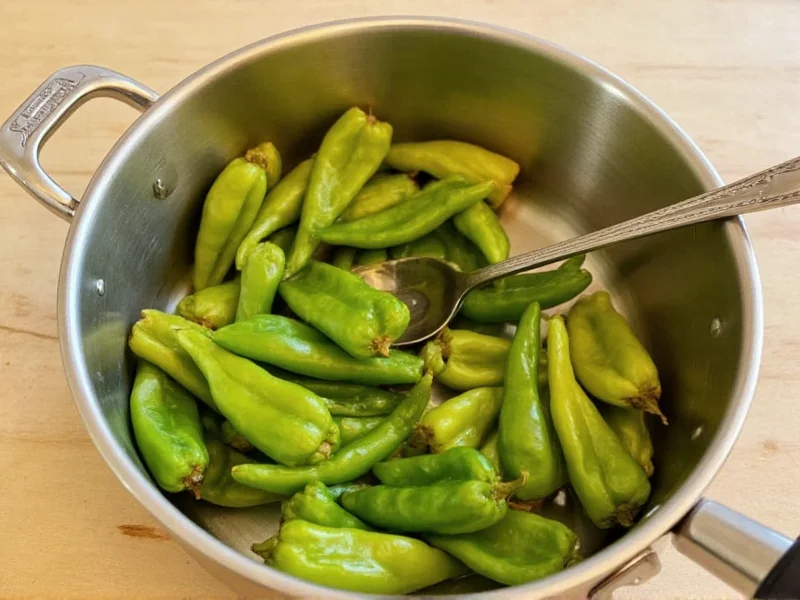Rehydrating dried chiles transforms these shelf-stable ingredients into versatile cooking components essential for authentic Mexican, Southwestern, and global cuisines. This simple technique unlocks complex flavors that powdered or fresh chiles often can't replicate. Understanding the proper rehydration process ensures you maximize both flavor and texture in your culinary creations.
Why Rehydrate Dried Chiles?
Dried chiles concentrate flavors through the dehydration process, but require rehydration to become usable in most recipes. Proper rehydration:
- Restores moisture content for blending into smooth sauces
- Activates flavor compounds that remain dormant in dried state
- Softens tough skins for easier handling and processing
- Prevents bitter flavors that can develop when cooking dried chiles directly
- Creates the ideal texture for stuffing, blending, or incorporating into dishes
Three Effective Methods for Rehydrating Chiles
While hot water soaking remains the standard technique, different methods yield varying results depending on your recipe needs:
| Method | Process | Best For | Time Required |
|---|---|---|---|
| Hot Water Soak | Cover chiles with 175°F-190°F water in non-reactive bowl | Most recipes requiring smooth sauces | 20-30 minutes |
| Steam Rehydration | Place chiles over simmering water for gentle moisture absorption | Delicate chiles like guajillo that can become bitter | 15-25 minutes |
| Simmer Method | Gently simmer chiles in broth or liquid component of recipe | Dishes where chile flavor should infuse cooking liquid | 10-15 minutes |
Step-by-Step Guide to Perfectly Rehydrated Chiles
Preparation: Selecting and Preparing Dried Chiles
Choose pliable dried chiles without excessive brittleness or mold. Before rehydration:
- Remove stems by gently twisting them off
- Shake out loose seeds (retain some for extra heat)
- Wipe chiles gently with damp cloth to remove surface dust
- For thicker chiles like ancho or mulato, make a small slit to allow water penetration
The Toasting Technique (Optional but Recommended)
Professional chefs often toast dried chiles before rehydration to enhance flavor complexity:
- Heat dry skillet over medium heat
- Place chiles in single layer and toast 15-30 seconds per side
- Remove when chiles become fragrant but before smoking
- Immediately transfer to soaking liquid to stop cooking process
This step develops deeper, smokier notes without bitterness—essential when learning how to rehydrate dried chiles properly for authentic mole sauces.
Perfect Soaking Technique
The water temperature significantly impacts flavor development when rehydrating dried chilies step by step:
- Heat water to 175°F-190°F (just below simmering)
- Place prepared chiles in heatproof bowl
- Pour hot water over chiles, ensuring complete submersion
- Place small plate on top to keep chiles submerged
- Cover bowl with plastic wrap to retain heat
- Soak 20-30 minutes (thicker chiles require longer)
How to Tell When Chiles Are Properly Rehydrated
Timing provides a general guideline, but visual and tactile cues determine perfect rehydration:
- Flexibility test: Chiles should bend easily without cracking
- Color: Should appear plump and vibrant, not faded
- Texture: Skin should feel supple, not slimy or mushy
- Thickness: Thicker chiles like pasilla may need 30+ minutes while thinner guajillo may require only 15-20 minutes
Over-soaking creates waterlogged chiles that dilute flavors, while under-soaking leaves chiles too tough for proper blending—critical considerations when rehydrating dried peppers for sauce consistency.
Common Rehydration Mistakes to Avoid
Even experienced cooks make these errors when learning the best method to rehydrate chiles for cooking:
- Using boiling water: Scalding water extracts bitter compounds—always use hot but not boiling water
- Skipping the toasting step: For many recipes, toasting dramatically improves flavor depth
- Over-soaking: Chiles become waterlogged and lose flavor intensity
- Not weighing down chiles: Floating chiles rehydrate unevenly
- Using reactive containers: Aluminum or copper bowls can create off-flavors
What to Do With Rehydrated Chiles
Properly rehydrated chiles open numerous culinary possibilities:
- Blending: Drain well before blending into smooth sauces (reserve soaking liquid for thinning)
- Stuffing: Ancho and mulato chiles hold shape well for chiles rellenos
- Chopping: Guajillo and cascabel work well chopped into stews
- Infusing: Simmer rehydrated chiles in liquids to impart flavor
When incorporating rehydrated chiles into recipes, remember that the soaking liquid contains valuable flavor compounds—strain it through cheesecloth and use it to adjust sauce consistency rather than plain water.
Storage Tips for Rehydrated Chiles
If you've rehydrated more chiles than needed immediately:
- Store in airtight container with just enough soaking liquid to cover
- Refrigerate for up to 1 week
- Freeze in ice cube trays for longer storage (3-6 months)
- Never store rehydrated chiles dry—they'll harden again
For meal prep efficiency, many chefs rehydrate chiles in larger batches and freeze portions for future use—an excellent technique when rehydrating ancho chiles or other varieties frequently used in your cooking repertoire.
Special Considerations for Specific Chile Varieties
Different chiles require slight technique adjustments when rehydrating guajillo chiles versus thicker varieties:
- Ancho: Thick flesh requires 25-30 minutes soaking; excellent for blending into smooth sauces
- Guajillo: Thinner skin needs only 15-20 minutes; prone to bitterness if over-soaked
- Chipotle: Smoked variety benefits from toasting to enhance smokiness
- Arbol: Small size means quick rehydration (10-15 minutes) but retains heat well
Understanding these nuances helps determine the time needed to rehydrate dried chiles properly for specific recipe requirements.











 浙公网安备
33010002000092号
浙公网安备
33010002000092号 浙B2-20120091-4
浙B2-20120091-4